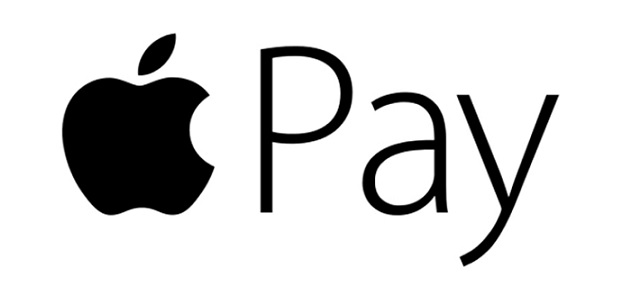
Five months after shaking hands with Apple Inc., retailer Kohl’s Corp. is starting to compete with the tech giant’s mobile-payment service Apple Pay. For Apple, the market leader of in-store mobile payments, moves like Kohl’s are becoming increasingly familiar. Over the summer, Wal-Mart Stores Inc. rolled out its own mobile-payment service nationwide and pharmacy chain CVS Health Corp. introduced CVS Pay.
Apple Pay, which turns 2 years old this month, is facing stiffer competition and needs to find ways to stand out in a crowded field. In the next year, most retailers and fast-food restaurants will start their own mobile-payment services, and some of them will also offer Apple Pay. The service, which expanded into Russia earlier this month, is looking to absorb more functions of people’s traditional wallets, such as transit cards and retail loyalty cards.
“You want to get into as many use cases as possible,” said Greg Weed, director of card performance research at Phoenix Marketing International. “The wallet app is ideally suited to self-service types of terminals: gas pumps, vending machines, transit. All of this stuff builds transactions. All of these things build up utility.”
Apple hasn’t disclosed terms it’s reached for Apple Pay or broken out sales it gets from the service. Assuming it gets a small percentage of every transaction, the revenue is still negligible for the company, which posted total sales of almost $234 billion in its most recent fiscal year. That revenue included $19.9 billion in services, of which transaction fees are a part.
The value of in-store transactions by people paying with their mobile phones, known as proximity payments, is expected to reach $210 billion by 2019 in the U.S., according to researcher eMarketer Inc. While that may produce a small but growing stream of revenue for the the technology giant, the Apple Pay feature may also make the company’s phones more attractive, boosting loyalty among users and helping Apple compete with rivals like Samsung Electronics Co.
Apple has spent much of the past two years raising awareness of its payment feature and getting consumers to use it in stores, apps and, most recently, online. Services such as Apple Pay accounted for 9 percent of in-store credit-card transactions and about 5 percent of credit-card dollars spent, according to a May survey by Phoenix, which asked some 5,100 adults about their spending over one month.
While it’s made headway, Apple Pay has a way to go to gain mass adoption, partly because some people don’t see it as an improvement over the current way of doing things. To boost usage, Cupertino, California-based Apple needs to show its product is superior than a credit card. According to Pymnts.com and InfoScout, 58 percent of people in a June survey said Apple Pay is just as easy as a card, while 56 percent of iPhone 6 and 6 Plus users said both methods take about the same time.
‘Adding Value’
“They haven’t proven their mobile-wallet applications are better than existing payment mechanisms,” said Jordan McKee, a senior analyst for payments at 451 Research. Adding value is “the next frontier for this whole space.”
Banks and retailers see a big part of that value addressed by integrating payments more deeply with rewards, coupons and loyalty programs. Capital One Financial Corp. has added more transaction analysis and control features, said Tom Poole, a managing vice president at the bank. It lets customers activate and disable their bank-issued cards via its app. Samsung Pay lets users earn gift cards from Dunkin’ Donuts as well as earn money with its own rewards prepaid card. Alphabet Inc., the parent of Google, tested its own loyalty program, the Tap 10, earlier this year.
Last week, Kohl’s unveiled its mobile-payment option, Kohl’s Pay, which will integrate its private-label credit card into its mobile app. That will let the more than 25 million Kohl’s Charge users to pay for purchases with their mobile phones. The service was announced five months after Menomonee Falls, Wisconsin-based Kohl’s added Apple Pay to its mobile app.
“We are interested in supporting payments – whatever payments our customers feel like are important to them,” Ratnakar Lavu, Kohl’s chief technology officer, said in an interview. Kohl’s Pay users will be able to redeem Kohl’s Cash, apply a coupon and pay for a transaction with one click – something they can’t do with Apple Pay.
Transit push
Apple is also ramping up its services. This month, commuters in Japan will be able to use Apple Pay to buy railway tickets, which could prove to be a huge opportunity for Apple. Operator East Japan Railway Co. alone served 17.4 million passengers a day in the year that ended in March, and Apple has added special chips to its iPhones to support the service. Apple Pay already works on the London Underground, buses and other forms of transit there.
“We’ve taken away the whole step of people having to buy a ticket,” said Shashi Verma, director of customer experience at Transport for London.
Apple is looking to serve more transit systems as cities like New York and Boston move toward tap-based mobile payments as an option. Some commuter rail lines servicing both cities currently let customers buy tickets from within an app.
While Apple doesn’t have its own loyalty program, it is making it easier for consumers to take advantage of merchant reward plans. In June, it began working with Orange Cash, a mobile-payment app for customers of French telecom giant Orange SA. Orange Cash uses geo-location to personalize offers sent to users’ phones and rewards them for loyalty to particular brands. Apple Pay is also integrated into the app of Walgreens Boots Alliance Inc.
Source: Bloomberg
Banking 4.0 – „how was the experience for you”
„To be honest I think that Sinaia, your conference, is much better then Davos.”
Many more interesting quotes in the video below: